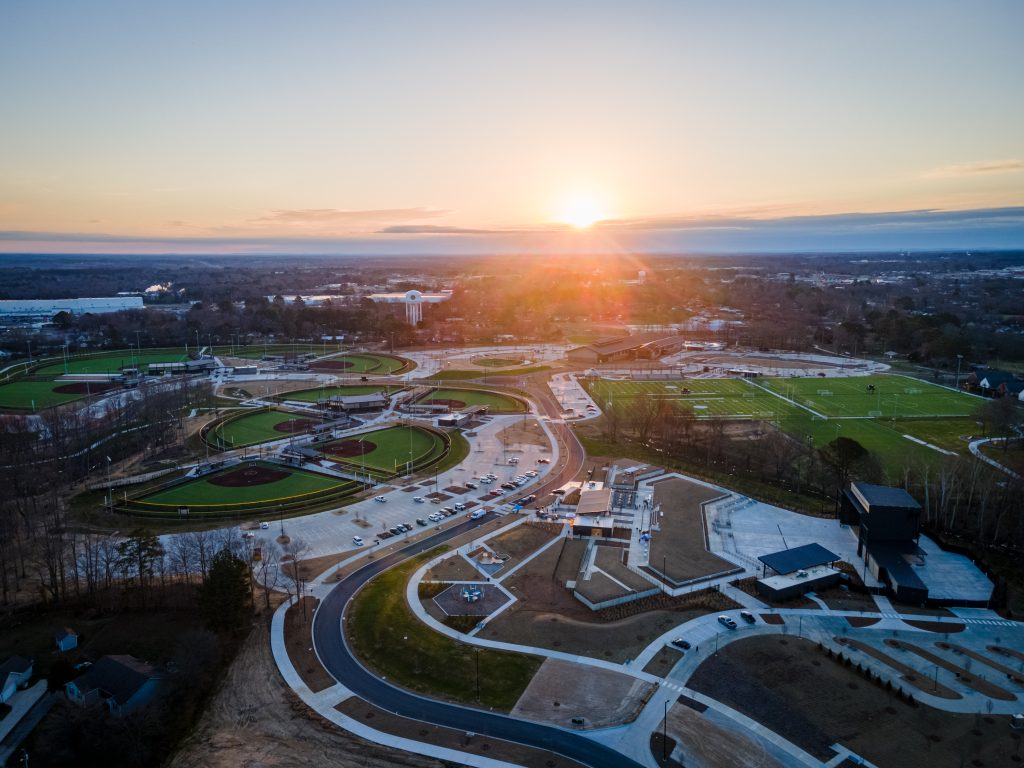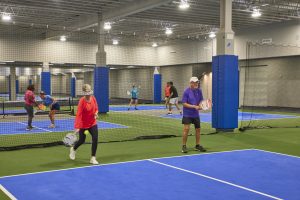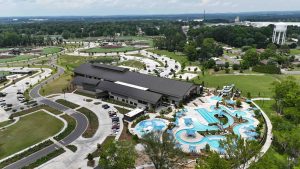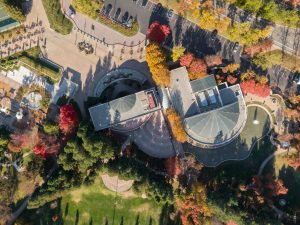Image courtesy of Sand Mountain Park & Amphitheater
For a small local community, having a beautiful state-of-the-art field or court to practice and play sports on used to feel like a pipe dream. But with the surge in popularity of youth sports tourism, that pipe dream is becoming a reality for several small towns across the United States. Building a hybrid venue in a small town can provide the community with the best facility imaginable while drawing in guests from other towns and states who are attending a tournament or event. While the facility itself is an amazing benefit for the town, the economic impact that comes with it is often the biggest selling point.
Hybrid Venues – What Are They?
A hybrid venue is one that serves the local community and acts as a tournament venue for travel teams. Big national tournaments draw in crowds from all over the country and provide huge boosts to a facility’s revenue and economic impact in the surrounding community. The only problem is that these large tournaments are typically only on the weekends so during the weekdays, a tournament facility might be completely empty. With a hybrid venue, the facility would provide sports programs and activities for the local community during the week and host tournaments during the weekends. This way, the facility never sits empty, and the community can reap the rewards of having a nice sports facility to use while also generating a greater economic impact.
How Does a Hybrid Venue Work?
Hybrid venues are a near-perfect solution for the communities that build them, but their success depends on the community’s support. The communities that support the development of a hybrid venue need to have a strong desire to utilize it while also acknowledging that the weekend tournaments are vital to the facility’s continued operation. As mentioned earlier, the national tournaments are almost always held during the weekend. The community needs to understand that during the tournament season, it will be more difficult for them to get courts or fields during the weekend. More difficult, but not impossible. The SF Network has several hybrid venues and the best way to serve both the local community and tournament teams is by blocking off times or areas of the venue that can be used by the community even while a large tournament is going on.
How Hybrid Venues Impact Community Health?
Aside from the many millions of dollars that a hybrid venue may bring into a community, it also brings the opportunity to improve the community’s health. The Aspen Institute’s Project Play was a research project investigating the health benefits associated with youth sports and the benefits of a physically active community. The research found that physically active communities have 10 percent lower rates of obesity, 18 percent lower rates of high blood pressure, and 3 percent lower rates of heart disease. It was also found that these communities smoke less, have decreased unemployment rates, and have higher property values. And since active parents were associated with active kids, the above benefits and more are then passed down to the next generations. Active kids were found to have a reduced risk of heart disease, stroke, cancer, and diabetes as well as lower levels of depression and higher levels of self-esteem. And active kids are eight times more likely to remain active into adulthood, so the cycle will start anew when those active kids have children of their own.
Considerations for Building a Hybrid Sports Venue
The idea of a hybrid venue is to utilize the land of a small town and the population of big towns to build a sports facility that can host tournaments and provide programming to the local community. All while boosting the community’s economy. But the hybrid venue model won’t work in any small town. There are several factors that influence the success of the facility. The place that the hybrid venue will go should be within an 8-hour drive away from a larger community with an interest in the sport the venue will be equipped for. Any farther and those teams might settle for a lesser facility just to save time and energy. The area also needs to have enough lodging and dining options to cater to the increased crowds that the venue will attract during the tournament season. Another important factor is the amount of competition in the area for fitness, recreation, and children’s programming. The hybrid venue still needs locals to utilize it during the weekdays for it to continue to serve as a national tournament venue. Lastly, there needs to be land available for the venue to go. But if your town checks all those boxes, a hybrid venue could work great there.
If you feel that your town would make a great place for a hybrid venue and are interested in bringing sports tourism and better community health to your city, contact us today. The Sports Facilities Companies has experience building and managing venues of all types and can help you develop a venue that can thrive in your community. To learn more about our services, contact us or give us a call at (727) 474-3845.






